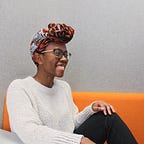Session IIIa Report //// Integrating Art & Design Education with Science, Engineering & Medicine
Wednesday morning’s panel focused on the soon-to-be-released report on integrating the sciences, arts, and humanities (referred to as STEAM throughout) in education. Tom Rudin, the director of the NRC Board on Higher Education and Workforce, introduced the panel by specifying that the two main goals for this report were to understand how we can better prepare both undergraduate and graduate students for what they will experience in the workforce, and to encourage them to be engaged citizens as they exit the academic setting. The report, which will be released on May 7, 2018, is a two-year study from over twenty committee members who hail from diverse backgrounds. It addresses the questions of: What evidence exists about the benefits of integrating the arts and humanities into the traditional STEM disciplines? What does integration mean? How does integration look from the perspective of faculty, students, and the institution itself? Since the results of the report have not yet been finalized, the panel’s purpose was to communicate the process of the report and to generate ideas for further research. Panelists Laurie Baefsky, Youngmoo Kim, and Pamela Jennings spoke about their research and work in the integration of STEAM and then fielded questions on how to best receive and implement the coming report.
Laurie Baefsky began by presenting information on the organization that she directs, Alliance for the Arts in Research Universities (a2ru). Its mission subscribes to Liz Lerman’s philosophy that the world is full of “wicked problems” which require diverse people to create diverse solutions. Therefore, a2ru is committed to integrating the STEAM disciplines by researching methods to foster creative environments and develop new technology hubs. Placemaking is of special interest to those at a2ru, so they have focused on creating spaces for students in higher education to innovate, collaborate, and create based on their hybrid interests. She concluded with the reflective question of “Why integrate?” She answered it with a series of quotes, one of which came from Astro Teller: “If you want to explore things you haven’t explored, having people who look just like you and think just like you is not the best way”. The diversity of thought and background is required to solve these difficult problems.
The panel continued with Youngmoo Kim, who described and displayed his work at Drexel University and the larger Philadelphia community. As the director of the Expressive and Creative Interactive Technologies (ExCITe) Center, he leads undergraduate and graduate students from different disciplines to collaborate with each other. One such example of collaboration occurred when a graduate student partnered with an artist-in-residence to design and build DrumHenge, a circle of drums played by magnets. This project, among others, provided an opportunity for students to explore other disciplines and it led to the creation of a new Masters program, Transdisciplinary Science, Computing and Engineering Design (TranSCEND MS) to further encourage students to implement multidisciplinary design in their studies. Kim then described examples of integrated work in the K-12 schooling system, highlighting how integration not only benefited students in higher education but also those high school or middle school, especially those in underrepresented communities. This network was crucial to bringing together the STEAM disciplines, from the earliest schooling to post-graduate life.
Pamela Jennings completed the panel presentations by speaking about why we should focus on integration now and why it matters. In this more philosophical stance, Jennings expanded on Richard Rorty’s theory of the Liberal Ironist, a person who heavily considers his or her “final vocabulary”, a set of words to justify their actions, beliefs, and lives. Ironists realize that their vocabulary is not perfect and that the arguments within it will not alleviate the doubts they have about their own viewpoint. So they seek to broaden their perspective by learning different beliefs and systems in order to challenge their own beliefs. As a diverse group of hybrids working in STEAM, she challenged us to embrace our inner Liberal Ironist, to recognize the different theories, principles, and practices that are taught in other disciplines and to embrace the similarities. Then we can include seemingly opposing disciplines into the concept of “us” and collaborate to innovate together.
The presentations prompted a discussion on how best to implement the practices and thoughts outlined by the panel. Questions from the audience ranged from incorporating practitioners from the fine arts disciplines to funding the start-up integration programs to ensuring that new educational policies will align with the evidence found in the report. In conclusion, many of us walked away from the panel discussion confident that the philosophy of the hybrid and the integrated curriculum is already in action. As seen by the many examples from the panel, colleges and schools are recognizing the importance of combining different disciplines in order to foster innovation. These bottom-up approaches have worked and have encouraged current and past students to be creative. I am optimistic that this report will provide the evidence needed to inform relevant stakeholders, namely our policy-makers and administrators, of the importance of diversity, not just from individual to individual, but also within the individual. In a world that is increasingly divided, I hope that we understand the importance of diversity and difference, for “the single story creates stereotype and the problem with stereotype is not that they are untrue but that they are incomplete” (Chimamanda Ngozi Adichie). If we are to progress in a rapidly changing world, we need people who can engage in different fields, understand different perspectives, and encourage others to do the same.
